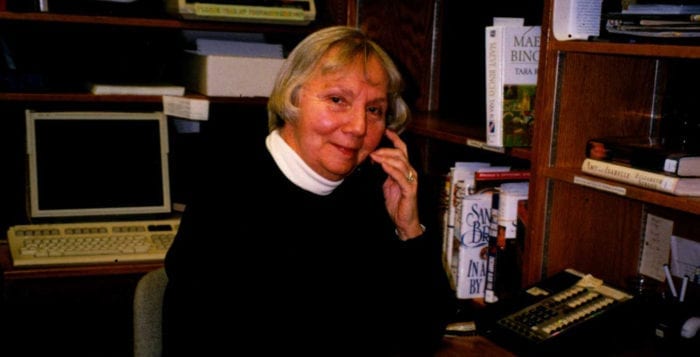Reviewed by Melissa Arnold

Have you ever wondered what your pets are thinking, or what they’re up to when you’re not around? Actor Alan Cumming and his photographer/illustrator husband, Grant Shaffer, sure have. Constantly entertained by their late beloved dogs, Honey and Leon, the couple decided to share the fun in their new children’s book, “The Adventures of Honey & Leon,” beautifully illustrated with a silly, imaginative story line. Cumming and Shaffer, who have been together for 13 years, recently answered questions about the book via email.
Tell us a little bit about yourselves. Were you always animal lovers?
Alan Cumming: I always had animals around me growing up. I had two little West Highland Terrier dogs when I was a little boy, but as I lived on a country estate there were always sheep and cows and deer and pheasants around.
Grant Shaffer: I’ve always been an animal lover. I grew up with dogs, cats, a rabbit, lizards, snakes, hamsters, fish … I even had a pet rat that I was crazy about.
Is this your first foray into writing/illustrating?
AC: I’ve also written “Tommy’s Tale,” a novel published in 2002; “Not My Father’s Son,” a No. 1 New York Times best-selling memoir; and a book of photographs and stories titled “You Gotta Get Bigger Dreams.” GS: I illustrated a children’s book last year called “Three Magic Balloons,” written by Julianna and Paul Margulies.
How did you come up with the story line?
 GS: The idea came up when we’d be traveling and missing our dogs. We would spot people at the airport, on the street or at a beach and say, “There’s Honey” (old lady in a bathrobe and a floppy sun hat), or “There’s Leon” (short little guy wearing big sunglasses and a flat cap), and the story just grew from there. The problem with dogs is that they don’t stick around forever. I think this was our way of trying to immortalize them, and we thought kids would like this tale.
GS: The idea came up when we’d be traveling and missing our dogs. We would spot people at the airport, on the street or at a beach and say, “There’s Honey” (old lady in a bathrobe and a floppy sun hat), or “There’s Leon” (short little guy wearing big sunglasses and a flat cap), and the story just grew from there. The problem with dogs is that they don’t stick around forever. I think this was our way of trying to immortalize them, and we thought kids would like this tale.
AC: It seemed such a good collaboration considering our respective jobs. I love the idea that we have created something together that celebrates the creatures we loved so much.
What was the process like?
GS: Alan wrote the story first, and then I added the drawings. We mulled the idea of doing a children’s book for years, so it took a long time. It was great, and pretty fluid. I’ve heard of some couples who are barely speaking to each other after a joint project like this, but luckily that’s not us!
How did you come to adopt Honey and Leon?
GS: Before we met, Alan had adopted Honey, and I had adopted Leon, so when we got together, so did they. They were pure love and magic to us, but all dog owners think that about their dogs. Leon would sing (howl) along to Radiohead or if a siren went by, and Honey always crossed her paws like a lady, and she’d actually pose for a camera, looking left, then right.
Did you often wonder what the dogs were thinking at home?
 GS: All the time. It usually involved food and dog treats I think. One time we rang up a pet psychic, so she could tell us what the dogs were thinking. She was so off, saying that Leon didn’t like my phone’s ringtone (I never used a ringtone) and that Honey wanted Alan to eat more vegetables (as a vegan, that’s all he eats). It was worth a funny phone call though.
GS: All the time. It usually involved food and dog treats I think. One time we rang up a pet psychic, so she could tell us what the dogs were thinking. She was so off, saying that Leon didn’t like my phone’s ringtone (I never used a ringtone) and that Honey wanted Alan to eat more vegetables (as a vegan, that’s all he eats). It was worth a funny phone call though.
Can you share with the readers a favorite story about Honey and Leon?
GS: We used to play a game: If I walked the dogs, Alan would hide somewhere in the house. Alan’s hiding places became more involved, and the chase would become more frantic each time. I would guide them with “hot” and “cold,” and Alan would clue them in with a whistle. When they’d finally find him, it was like a family reuniting that had been separated for decades — lots of whining and licks!
 Do you two hope to adopt pets again someday?
Do you two hope to adopt pets again someday?
GS: We already did! When Honey died (from old age), Leon was so lonely, so we adopted a Chihuahua mix named Jerry. Then Leon died (from old age) and we adopted Lala (a mini-collie mix, but she looks like a black fox). We are in love all over again.
Is there a particular message you hope to pass on to kids with this book?
GS: I like that the story features two gay dads, but that isn’t the story really. It’s just, “Here is our family on a fun adventure together.” I guess that’s a message in itself.
Who is your target audience?
AC: We recommend the book for kids ages 3 to 7.
Are there any other books we can look forward to from you?
GS: “The Further Adventures of Honey & Leon” comes out in 2019. “The Adventures of Honey & Leon” is available online and in stores wherever books are sold.
Cumming and Shaffer will make a special appearance at the Cinema Arts Centre, 423 Park Ave., Huntington on Sept. 18 at 7:30 p.m. Tickets are $75, $60 members. The event, hosted by Jud Newborn, includes a rare screening of Cumming’s “The Anniversary Party,” followed by a Q&A and book-signing reception for “The Adventures of Honey & Leon.” Every ticket holder will receive a copy of the book. Call 631-423-7611 for more information.


































